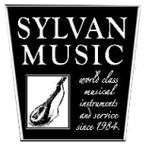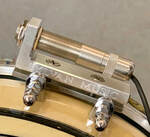|
In the ‘olden days’ it was really cumbersome to copyright a musical work. Regardless of whether it was a full scale symphonic work or a simple three chord song, in order to copyright it, it had to be notated in standard musical notation. Only then could it be submitted to the Library of Congress for copyright approval. Once approved, it would receive the familiar ® or © (they're interchangeable) symbol used to declare the copyright status of the piece.
When I graduated high school, I earned a living by transcribing audio recordings (usually cassette or reel-to-reel) by composers, songwriters, arrangers, performers and even jingle writers. It was very exciting to experience these early versions of pieces - some of which eventually became well known. And it was great ear training practice. Then in 1976 it all changed. Congress passed the Copyright Act of 1976. This new law (Public Law number 94-553) greatly reduced the hassle of copyrighting music. All you now have to do is submit a recording of the piece in almost any and all formats. That law also created a new symbol to designate protection, ‘P’ in a circle ℗. The ‘P’ stands for ‘phonogram’ which is another word for the phrase ‘sound recording.’ You probably never noticed but check out the symbol on a CD that was manufactured in the last few decades. It’s sure to be a ℗ not a © . -David
12 Comments
9/14/2023 04:42:48 am
Hello, I’ve been reading articles on this website and they have been very informative. I have been trying to improve my website as well. Please visit my website and help me with your valuable feedback.
Reply
9/19/2023 05:08:48 pm
When using music in your work, it's important to be aware of musical copyright law. Without proper licensing, you could face legal action and financial penalties. Always make sure to obtain permission and pay the appropriate fees before using any copyrighted music. Additionally, consider creating your own original music or using royalty-free music to avoid any legal issues. Stay informed and protect yourself by following these guidelines.
Reply
4/29/2024 07:00:16 am
Thanks for joining the conversation, your insights are valuable.
Reply
4/29/2024 01:48:25 pm
This post has made me reconsider my beliefs in a positive way. Well done!
Reply
5/2/2024 03:11:34 am
Enchanting read! Happily stumbled upon this gem! For all your plumbing contractor Ogden, visit our website.
Reply
7/5/2024 11:02:41 pm
Understanding musical copyright laws is crucial for both artists and listeners. It's not just about legalities; it's about respecting creativity and ensuring fair compensation for artists' work. This blog provides a clear overview, but I'm curious about how international copyright agreements impact emerging artists in diverse music scenes. Could exploring these agreements shed light on how global platforms manage copyrights across borders? Looking forward to more insights!
Reply
Leave a Reply. |

 RSS Feed
RSS Feed



